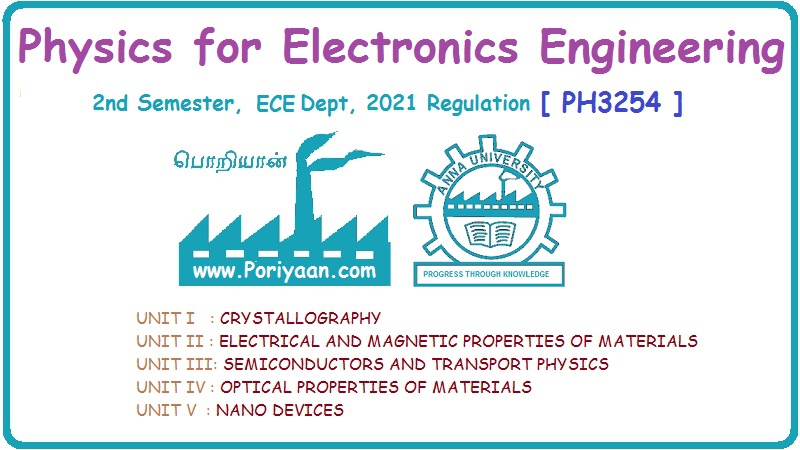Physics for Electronics Engineering: Unit IV: Optical Properties of Materials
Electro - Optic Effects
Optical Properties of Materials
Isotropic transparent materials such as glass do not exhibit double refraction under ordinary circumstances. However, they acquire the optical properties of a uniaxial crystal under the action of external forces. Consequently, they exhibit double refraction.
ELECTRO-OPTIC EFFECTS
Isotropic
transparent materials such as glass do not exhibit double refraction under
ordinary circumstances. However, they acquire the optical properties of a
uniaxial crystal under the action of external forces. Consequently, they
exhibit double refraction.
The
appearance of double refraction under the influence of an external agent is
known as artificial double refraction or induced birefringence.
The
direction of the optical axis in such materials will be collinear with the
direction of the external force. The action of the external force is to cause
distortion of the molecular arrangement within the material.
This inturn transforms the isotropic substance into an anisotropic substance. The induced birefringence disappears as soon as the external force is removed.
The
materials which experience a change in their optical behaviour under the
electric field are called electro-optic materials. This optical effects are
known as electro-optic effects.
Physics for Electronics Engineering: Unit IV: Optical Properties of Materials : Tag: : Optical Properties of Materials - Electro - Optic Effects
Related Topics
Related Subjects
Physics for Electronics Engineering
PH3254 - Physics II - 2nd Semester - ECE Department - 2021 Regulation | 2nd Semester ECE Dept 2021 Regulation
